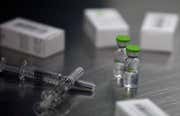Biotechnology uses of biological processes in the development or manufacture of a product or in the technological solution to a problem. Since the discovery of DNA in 1953, and the identification of DNA as the genetic material in all life, there have been tremendous advances in the vast area of biotechnology. Biotech has a wide range of uses including food alterations, genetic research and cloning, human and animal health care, pharmaceuticals and the environment.
The biotech arena has not been without controversy. In the 1970s, researchers were forced to stop doing certain types of DNA experiments, and other countries banned the use of genetically modified agricultural products. More recently, we've seen the controversy over cloning as well as stem-cell research. Perhaps the biggest development in the biotechnology field (as far as investors go) occurred when, in the 1980s, the U.S. Supreme Court ruled to allow for patenting of genetically modified life forms. This means that intellectual property will always be at the forefront of biotechnology - some argue that the scope of patent protection actually defines the industry.
Because of extremely high research and development costs coupled with very little revenue in the years of development, many biotechnology companies must partner with larger firms to complete product development. Over the past decade, the biotech industry, along with the hundreds of smaller companies operating in it, has been dominated by a small handful of big companies; however, any one of these smaller companies have the potential to produce a product that sends them soaring to the top.
There are still a lot of unknowns in biotechnology, but high-profile analysts, politicians and CEOs have all been quoted as stating that biotechnology is the future of health sciences.
Key Ratios/Terms
Research and Development (R&D) as a percentage of Sales = R&D Expenditures
Revenue
Generally speaking, the higher the percentage spent on R&D, the more is being spent developing new products. Thus, the lower this is, the better. This ratio is useful when comparing one company to another or to the industry in general. (To learn more, read The Ins And Outs Of In-Process R&D Expenses.)
Medicare/Medicaid: This national health insurance program is responsible for reimbursing individuals for certain health related costs. Any sudden changes in funding and reimbursement rates can have profound effects on the biotech industry. (For more insight, read What Does Medicare Cover?)
Orphan Drugs: These are drugs designed to treat people with rare diseases and infections (occurring in less than 200,000 individuals). Once the drugs are marketed to the public, orphan drug makers might not benefit from huge demand, but governments will usually subsidize many of the costs of producing these drugs.
(For more reading, see Chasing Down Biotech Zombie Stocks and Using DCF In Biotech Valutaion.)
Because drug development is an important aspect of biotechnology, understanding the process of approval of drugs for sale to the problem is also an important part of investing in the biotech industry.
Analyst Insight
Analyzing even a blue-chip company is no easy task. The job is even more difficult when the company in question has very little revenue and its livelihood hinges on one or two potential products.
As with analyzing any company, estimating earnings is key. Because of the long R&D phase, during which there is little revenue coming in, determining the prospective earnings of a biotech company is tricky. You can start by looking at the company's products in both development and production. For a company that is already selling products, looking at the sales trends makes it easy to determine the growth rates and market potential for the drug. For products in the pipeline you need to look at the disease that the drug/product intends to target and how large that market is. A drug that cures the common cold, cancer or heart disease is more lucrative than an orphan drug targeting an obscure disease affecting fewer than 100,000 people in North America; furthermore, most analysts prefer companies that are developing treatments as opposed to vaccines. Treatment drugs are used continuously and repeatedly, whereas vaccines are a one-time shot and are not nearly as lucrative from a financial perspective. (Read Measuring The Medicine Makers to learn more.)
Ideally, you want a company to have several products in development. That way, if one does not make it through the approval process, there are other products to balance the blow. At the same time, there is a happy medium between a company being too focused, and a company having so many developing ideas and products that it loses focus and spreads itself too thin.
Next, you want to take a look at is how far the company's products are in the stages of clinical development, and how close the product is to FDA approval. All companies wishing to sell drugs and/or biotech products in the U.S. require FDA approval. If a company is relatively new at the FDA process, you can expect it to take longer for it to gain approval. It is for this reason that many small biotech companies will partner with larger, more experienced ones. The difference of one year in gaining approval can mean millions of dollars.
As the key to any successful biotech company is solid financing, you also must consider where the company is getting its money from. Take a look under current assets on the balance sheet; the company should have plenty of cash. By looking at the current ratio/working capital ratio you should be able to determine whether it is cash stricken. Because ratios vary wildly across different industries, compare the ratios only to those of similar companies within the biotech industry. The reason for the variation is that most biotech companies use equity financing instead of borrowing, partly because equity is cheaper and partly because many banks and creditors usually refuse to finance such high-risk ventures for which there is a gross lack of collateral.
The other question you need to answer is where the company's money is being spent. Research and development should be the answer. Most biotech firms spend a majority of their money on R&D for new products. Some believe that the more a company spends on R&D, the better the company. Even more important, however, is finding a company that does a lot of research while still controlling expenses to make the cash last for the years ahead. For companies with sales, the process is a little easier: you can look at R&D expenditures in relation to revenue, employees, or some other measure, and then compare it to similar biotech firms. This gives insight into how frugal the company is with its money.
When considering investing in biotech, doing a simple stock screen based on earnings, revenue or some other financial figure might not uncover the diamond in the rough. You need to research the potential market for a drug, determine whether there are competitive products and, most importantly, predict whether the product will gain final approval. This doesn't mean you need to be a doctor to analyze a biotech stock, but you do need to understand the area of biotechnology in which the company is situated, and whether the risk of investing in the company is worth the reward.
Porter's 5 Forces Analysis
Key Links
The Industry Handbook: The Semiconductor Industry
The biotech arena has not been without controversy. In the 1970s, researchers were forced to stop doing certain types of DNA experiments, and other countries banned the use of genetically modified agricultural products. More recently, we've seen the controversy over cloning as well as stem-cell research. Perhaps the biggest development in the biotechnology field (as far as investors go) occurred when, in the 1980s, the U.S. Supreme Court ruled to allow for patenting of genetically modified life forms. This means that intellectual property will always be at the forefront of biotechnology - some argue that the scope of patent protection actually defines the industry.
Because of extremely high research and development costs coupled with very little revenue in the years of development, many biotechnology companies must partner with larger firms to complete product development. Over the past decade, the biotech industry, along with the hundreds of smaller companies operating in it, has been dominated by a small handful of big companies; however, any one of these smaller companies have the potential to produce a product that sends them soaring to the top.
Common Applications of Biotechnology |
|
| Agriculture Improved foods, pest control, plant and animal disease control, improved food production. |
Industry Oil/mineral recovery, environmental protection, waste reduction. Improved detergents, chemicals, stronger textiles. |
| Health Care Drugs, vaccines, gene therapy, tissue replacements. |
Research Understanding the human genome and better detection of diseases. |
There are still a lot of unknowns in biotechnology, but high-profile analysts, politicians and CEOs have all been quoted as stating that biotechnology is the future of health sciences.
Key Ratios/Terms
Research and Development (R&D) as a percentage of Sales = R&D Expenditures
Revenue
Generally speaking, the higher the percentage spent on R&D, the more is being spent developing new products. Thus, the lower this is, the better. This ratio is useful when comparing one company to another or to the industry in general. (To learn more, read The Ins And Outs Of In-Process R&D Expenses.)
Medicare/Medicaid: This national health insurance program is responsible for reimbursing individuals for certain health related costs. Any sudden changes in funding and reimbursement rates can have profound effects on the biotech industry. (For more insight, read What Does Medicare Cover?)
Orphan Drugs: These are drugs designed to treat people with rare diseases and infections (occurring in less than 200,000 individuals). Once the drugs are marketed to the public, orphan drug makers might not benefit from huge demand, but governments will usually subsidize many of the costs of producing these drugs.
(For more reading, see Chasing Down Biotech Zombie Stocks and Using DCF In Biotech Valutaion.)
Because drug development is an important aspect of biotechnology, understanding the process of approval of drugs for sale to the problem is also an important part of investing in the biotech industry.
| Food & Drug Administration (FDA) Approval Process | |
| Phase I (approx. 1 year) | This is testing on 20-80 healthy individuals. The purpose of this phase is to determine the dosage and safety of the drug. |
| Phase II (approx. 1-3 years) | As testing on 100-300 patients suffering from disease or condition, this phase mainly determines effectiveness and potential side effects. |
| Phase III (approx. 2-3 years) | As testing on 1000-5000 patients suffering from disease or condition, this phase monitors side effects brought on by long-term usage. This stage is by far the most stringent and rigorous. Some of the patients receive the drug and the others receive a placebo (like a sugar pill) to determine effectiveness. |
| Note: It has been estimated that only 1-2 out of 20 drugs that enter the FDA testing process actually gain final approval. | |
Analyst Insight
Analyzing even a blue-chip company is no easy task. The job is even more difficult when the company in question has very little revenue and its livelihood hinges on one or two potential products.
As with analyzing any company, estimating earnings is key. Because of the long R&D phase, during which there is little revenue coming in, determining the prospective earnings of a biotech company is tricky. You can start by looking at the company's products in both development and production. For a company that is already selling products, looking at the sales trends makes it easy to determine the growth rates and market potential for the drug. For products in the pipeline you need to look at the disease that the drug/product intends to target and how large that market is. A drug that cures the common cold, cancer or heart disease is more lucrative than an orphan drug targeting an obscure disease affecting fewer than 100,000 people in North America; furthermore, most analysts prefer companies that are developing treatments as opposed to vaccines. Treatment drugs are used continuously and repeatedly, whereas vaccines are a one-time shot and are not nearly as lucrative from a financial perspective. (Read Measuring The Medicine Makers to learn more.)
Ideally, you want a company to have several products in development. That way, if one does not make it through the approval process, there are other products to balance the blow. At the same time, there is a happy medium between a company being too focused, and a company having so many developing ideas and products that it loses focus and spreads itself too thin.
Next, you want to take a look at is how far the company's products are in the stages of clinical development, and how close the product is to FDA approval. All companies wishing to sell drugs and/or biotech products in the U.S. require FDA approval. If a company is relatively new at the FDA process, you can expect it to take longer for it to gain approval. It is for this reason that many small biotech companies will partner with larger, more experienced ones. The difference of one year in gaining approval can mean millions of dollars.
As the key to any successful biotech company is solid financing, you also must consider where the company is getting its money from. Take a look under current assets on the balance sheet; the company should have plenty of cash. By looking at the current ratio/working capital ratio you should be able to determine whether it is cash stricken. Because ratios vary wildly across different industries, compare the ratios only to those of similar companies within the biotech industry. The reason for the variation is that most biotech companies use equity financing instead of borrowing, partly because equity is cheaper and partly because many banks and creditors usually refuse to finance such high-risk ventures for which there is a gross lack of collateral.
The other question you need to answer is where the company's money is being spent. Research and development should be the answer. Most biotech firms spend a majority of their money on R&D for new products. Some believe that the more a company spends on R&D, the better the company. Even more important, however, is finding a company that does a lot of research while still controlling expenses to make the cash last for the years ahead. For companies with sales, the process is a little easier: you can look at R&D expenditures in relation to revenue, employees, or some other measure, and then compare it to similar biotech firms. This gives insight into how frugal the company is with its money.
When considering investing in biotech, doing a simple stock screen based on earnings, revenue or some other financial figure might not uncover the diamond in the rough. You need to research the potential market for a drug, determine whether there are competitive products and, most importantly, predict whether the product will gain final approval. This doesn't mean you need to be a doctor to analyze a biotech stock, but you do need to understand the area of biotechnology in which the company is situated, and whether the risk of investing in the company is worth the reward.
Porter's 5 Forces Analysis
- Threat of New Entrants. Because the biotech industry is filled with lots of small companies trying to hit the jackpot, the barriers to enter this industry are enough to scare away all but the serious companies. Biotech firms require huge amounts of funding to finance their large R&D budgets. Having ample cash is one of the biggest barriers, so when interest rates are low, or the equity markets are receptive to initial public offerings, the barriers are lower. Specialization also creates barriers. For instance, knowledge about cancer and heart disease is quite high, whereas a company focusing on something more obscure would likely have a low threat of new entrants because there are very few experts in this field.
- Power of Suppliers. Biotech companies are unique because most of their value is driven by intellectual property. The nature of their business does not force them, unlike other industries, to rely on suppliers. Scientific tools, materials, computers and testing equipment is highly specialized, but the likelihood of these companies invading on their line of business is not very high. One snag is that marketing alliances have often proved to be problematic. Small biotech firms don't have the distribution capabilities to promote their new drugs, so they are forced to license their drugs to other suppliers.
- Power of Buyers. The bargaining power of customers has different levels in the biotech arena. For example, a company that sells pharmaceutical drugs has thousands of individual customers and doesn't need to worry too much about a buyer revolt. After all, when is the last time you were able to bargain with the pharmacist for a better deal? On the other side are the biotech firms, which sell highly specialized products to governments and hospitals. These large organizations have a lot more bargaining power with biotech companies.
- Availability of Substitutes. The threat of substitutes in the biotechnology field, again, really depends on the area. While patent protection might stop the threat of alternative drugs and chemicals for a period of time, eventually there will be a company that can produce a similar product at a cheaper price. Generic drugs, for instance, are a problem: a company that spends millions of dollars on the creation of a new drug must sell it at a high price to recoup the R&D costs, but then along comes a generic drug maker, which simply copies the formula and sells it for a fraction of the cost. This is a big problem in foreign countries where there is a lack of government control. Organizations will illegally produce patent protected drugs and sell them at much lower prices.
- Competitive Rivalry. There are more than 1,000 biotech companies operating in North America. With the top 1% of these companies making up a majority of the revenue, it's a tough industry in which to make a mark. The fight to see who can cure a disease or condition has researchers working day and night. Trade secrets are also extremely valuable. In short, the rivalry is extremely intense.
Key Links
- Food and Drug Administration (FDA) - The official website of the FDA.
- Bio Space - Get the latest regulation news and developments on the industry and specific stocks.
- BioTech and Pharma Stocks - This site has useful news and links on the biotech sector.
The Industry Handbook: The Semiconductor Industry
Related Articles
-
 Investing
InvestingA Biotech Sector Primer
Investing in biotechs can involve both huge losses and major gains. Learn about the industry that focuses on novel drug development and clinical research. -
 Investing
InvestingRisks and Rewards of Biotech Companies
We look at the risks and rewards of investing in biotech companies. -
 Insights
InsightsPharmaceutical Vs. Biotech Investing: Is It Worth The Risk?
Investopedia explains: Both pharma and biotech stocks are faced with a costly process that, when successful, can produce extremely profitable products. However, the process is unpredictable. -
 Insurance
InsuranceHow To Do Qualitative Analysis On Biotech Firms
It's almost impossible for the average investor to grasp the science that underlies biotech companies. Learn how investors analyze bio tech companies. -
 Insights
InsightsThe Biggest Biotech Companies
These biotech firms want to revolutionize medicine. If successful, they may see high profits, but investing in these companies carries significant risk. -
 Investing
InvestingInvesting In The Biotech Sector
The biotech sector is more than just medical research. Read this before you invest. -
 Investing
InvestingUsing DCF In Biotech Valuation
Valuing firms in this sector can seem like a black art, but there is a systematic way to pin a price on potential. -
 Trading
TradingBiotech Stocks Trade Near Major Levels of Support
With biotech stocks tumbling toward long-term levels of support, we take a closer look at how active traders will trade the bounce. -
 Investing
InvestingHow to Play the Biotech Rally (IBB,GILD,LABD)
These ETFs and stocks are some of the best bets to play the biotech rebound. -
 Investing
Investing3 Biotech Blue-Chip Companies to Keep an Eye On (AMGN, BIIB)
Discover three blue-chip biotech stocks you should keep your eye on in 2016. Despite recent struggles in the industry, these stocks are poised for a comeback.



